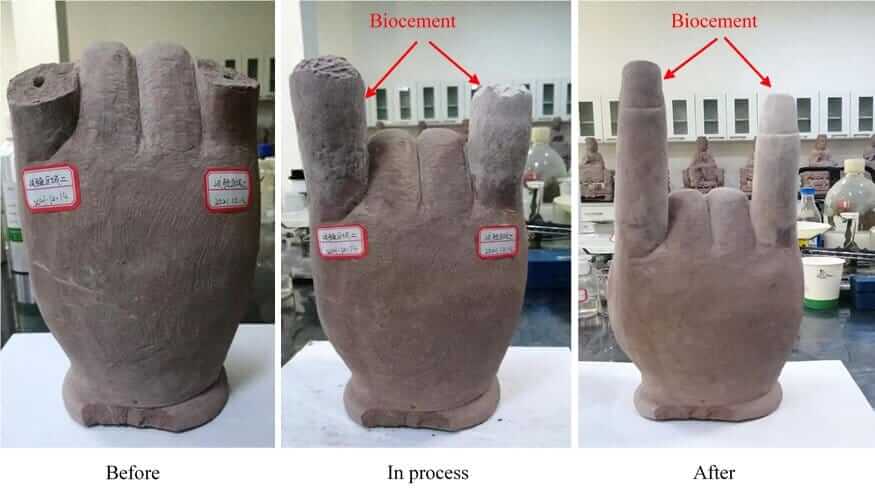By : Franyi Sarmiento, Ph.D., Inspenet, May 18, 2022
Scientists at Nanyang Technological University, Singapore (NTU Singapore), have found a way to create biocement from waste, making the alternative to regular cement even greener and more sustainable.
Biocement is a renewable form of cement that typically uses bacteria to form a hardening reaction that binds the soil together into a solid block.
NTU scientists have now managed to use two common waste materials, industrial carbide sludge and urea, which comes from mammalian urine, to create biocement.
They developed a process in which the reaction of urea with calcium ions in industrial carbide sludge forms a hard solid, or precipitate. When this reaction takes place in the soil, the precipitate binds the soil particles together and fills in the gaps between them, creating a compact mass of soil. The result is a block of biocement that is strong, resistant and less permeable.

The research team, led by Professor Chu Jian, Chairman of the School of Civil and Environmental Engineering, showed that this biocement could become a sustainable and cost-effective method for soil improvement, such as soil reinforcement for construction use. or excavation, beach erosion control, abatement of dust or wind erosion in the desert, or construction of freshwater reservoirs on beaches or in the desert.
It can also be used as a biocement to seal cracks in rock to control seepage and even to touch up and repair monuments such as rock carvings and statues.
“Biocement is a sustainable and renewable alternative to traditional cement and has great potential to be used in construction projects that require soil treatment. Our research makes biocement even more sustainable by using two types of waste as raw material. In the long term, it will not only make biocement cheaper to manufacture, but also reduce the cost of waste disposal,” explained Professor Chu Jian.
The biocement manufacturing process requires less energy and generates fewer carbon emissions compared to traditional cement production methods.
Source : https://ecoinventos.com/biocemento-renovable-con-urina-bacterias-y-calcio/

